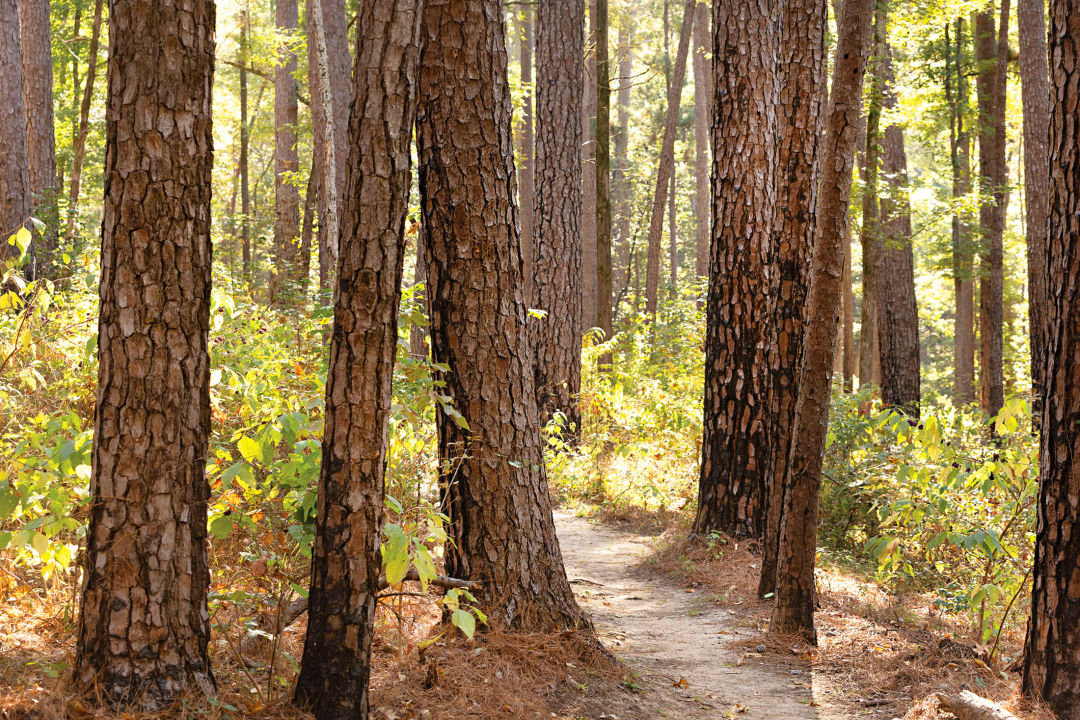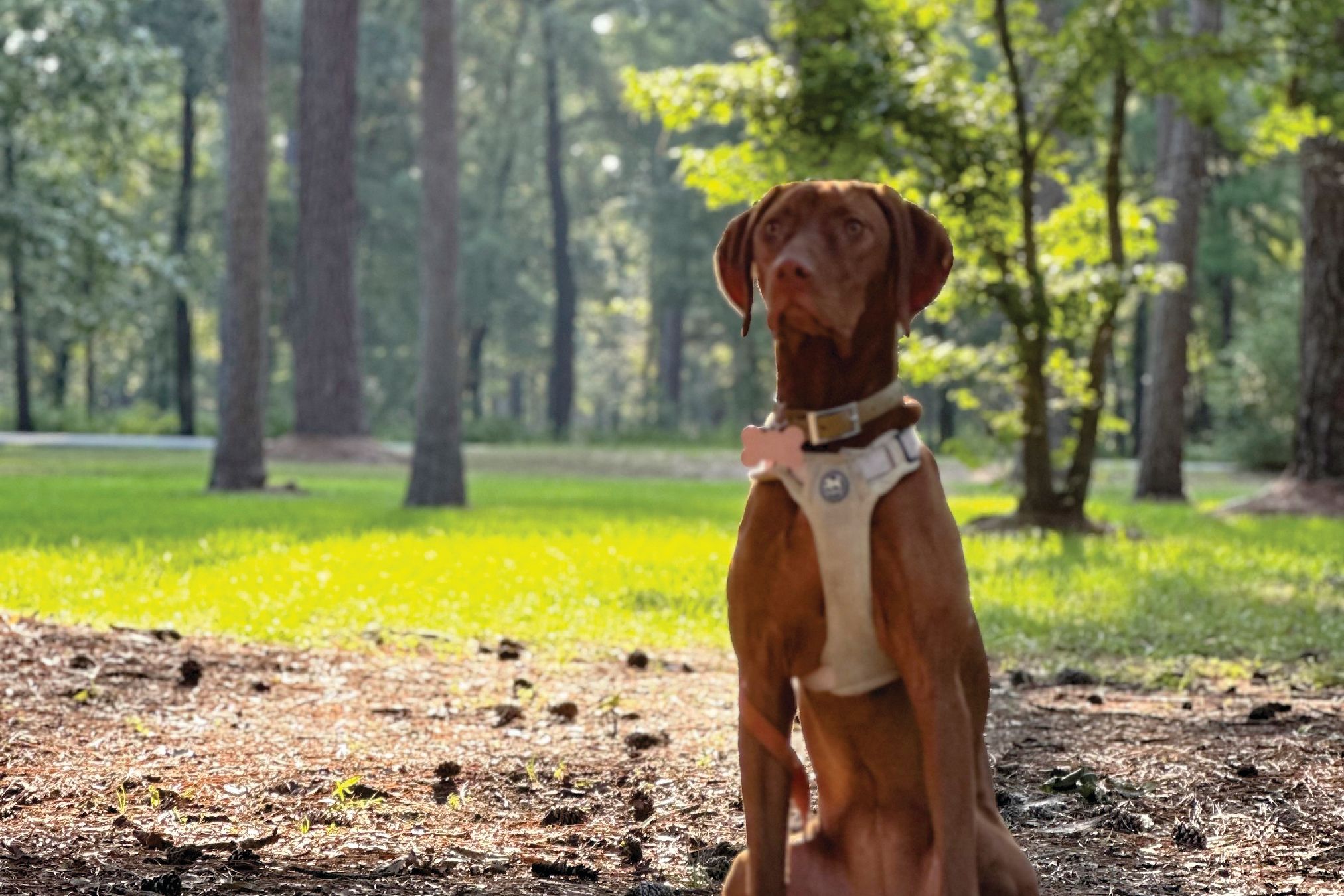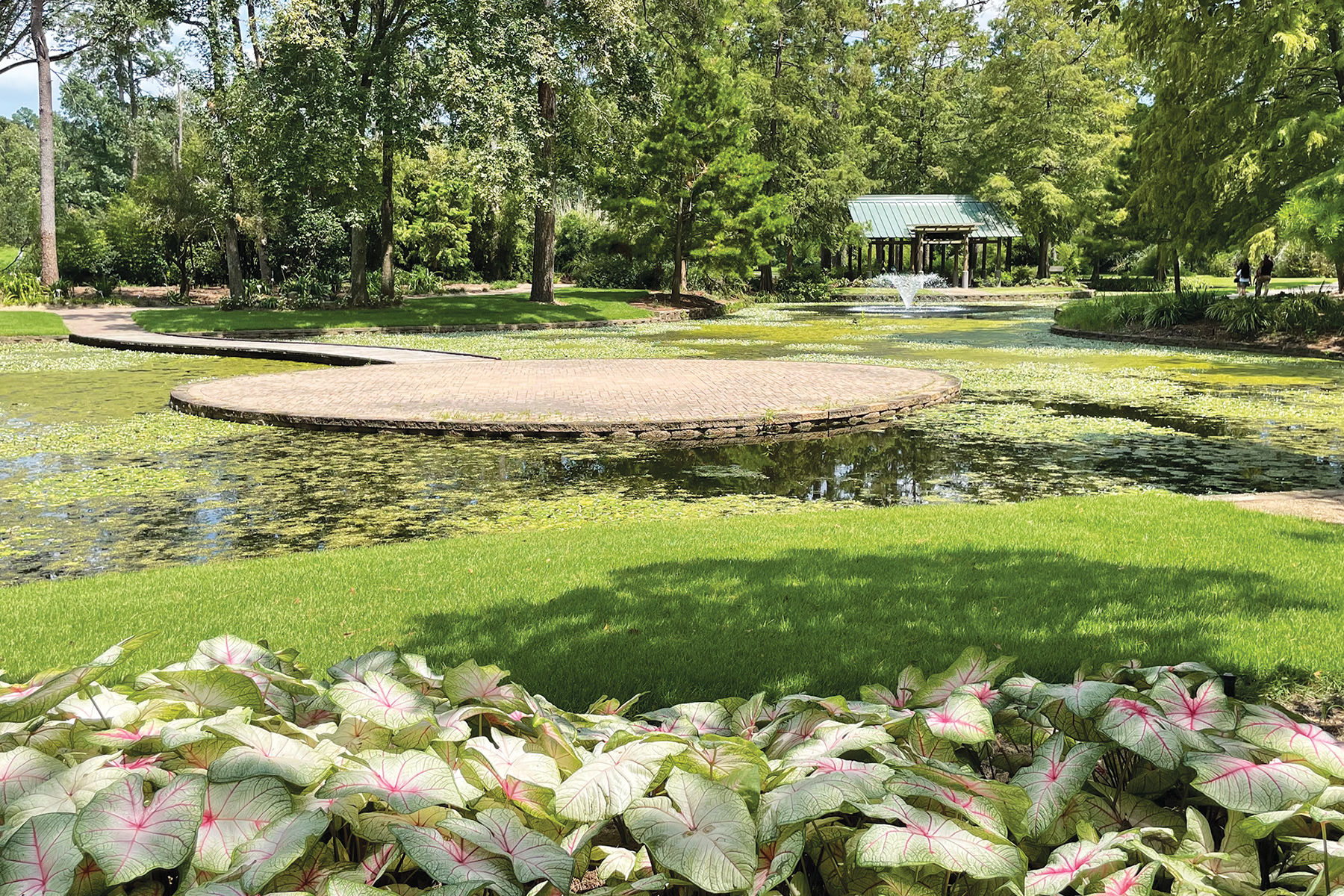Make the East Texas Pineywoods Your Next Great Escape

Image: Nicki Evans
We Think it’s time for a new sheriff in town. West Texas has been on everyone’s radar for a while, its cactus-dotted desertscape and iconic Big Bend National Park emblematic of how people view the Lone Star State. But the Pineywoods’ wetlands and forests full of loblolly pine and oak trees remind us of just how vast and diverse Texas’s landscape truly is.
This part of East Texas boasts sprawling country roads, hiking trails, wildlife, and tons of history. With more than a dozen state parks and all four of Texas’s national forests, the Pineywoods is the perfect place to visit during cooler weather when we’re able to enjoy the outdoors. Whether you’re traveling there with family or friends or decide to camp solo, you’ll find yourself so immersed in nature, you might not ever want to come back to the city.
East Texas is much more than just its beauty—it tells the true story of Texas. Long before it became a state in 1845, Caddo tribe settlements could be found throughout the Pineywoods area all the way back to the 800s. The Caddo Mounds State Historic Site sits on what was once a village and ceremonial center. After the Spanish took control of Texas in the late 1600s, they created El Camino Real de los Tejas, a network of roads that connected their missions from Mexico City to western Louisiana, based on Indigenous trade routes. It’s now a National Historic Trail known as the King’s Highway or Texas’s own Route 66, and follows sections of modern highways such as I-35, US 59, US 79, and TX 21, where those Caddoan remnants still sit.
To get the full East Texas experience, consider driving on this historic route, where you’ll be able to stop at different state markers and historic grounds that depict Texas history, including the David Crockett Spring, which commemorates the campsite Crockett stayed in on his journey to the Alamo.
And thanks to the Civilian Conservation Corps (CCC), created as a New Deal work program under President Franklin D. Roosevelt, we still have this state history preserved today. Those who enrolled in the CCC during the Depression helped construct the parks that visitors are now lucky to have the opportunity to escape to and enjoy through hiking, camping, and other activities.
Take a journey with us through East Texas’s national forests and state parks—or choose your own adventure.
The four national forests
Although the Pineywoods may seem far, the region actually begins just 50 miles north of Houston with the Sam Houston National Forest. Containing over 160,000 acres across Huntsville, Conroe, Cleveland, and Richards, this forest is a great place to start if you’re wanting to explore all of the Pineywoods, but, with its proximity to the city, it can also make for a fun-filled day trip or overnight camping adventure.

Image: Nicki Evans
Up for a challenge? The Sam Houston National Forest holds the popular Lone Star Hiking Trail, which spans a whopping 128 miles and boasts National Recreation Trail status. If you choose to attempt this, you’ll definitely need an extended overnight stay. There are three developed campgrounds within the forest: Cagle, Double Lake, and Stubblefield Recreation Areas.
Cagle is located along Lake Conroe’s shoreline, and it offers full-service hookups, a boat ramp, nearly 50 campsites, hike and bike trails, and plenty of opportunities for fishing. If you want to see redbud and dogwood tree blossoms, the best time to visit is mid-February to early March. Double Lake’s campground is on the forest’s east side. The area also surrounds a 24-acre lake with a swimming area and beach, and there are canoe and paddleboat rentals.

Image: Nicki Evans
On the western side of the national forest, but still along Lake Conroe, Stubblefield is a destination for fishing, hiking, birding, or hunting, and has around 30 first-come, first-served campsites ($15). Sites at Cagle and Double Lake can be reserved, starting at $20 for a tent site and up to $66 a night for RV electric sites.
About 60 miles north of Sam Houston, Davy Crockett National Forest allows dispersed camping year-round, with some restrictions during the fall deer hunting season. For ultimate solitude, consider staying in the more remote Big Slough Wilderness Area. For a bustling getaway, the Ratcliff Lake Recreation Area surrounds a 45-acre lake and offers camping, swimming, boating, fishing, a forest trail, a bathhouse, and a concession stand.
Travel another hour or so east to reach Angelina National Forest, known for the
Sam Rayburn Reservoir, which is popular for fishing, boating, and skiing. Caney Creek and Sandy Creek Recreation Areas offer camping along the shore.

Image: Nicki Evans
The Angelina National Forest is also home to Boykin Springs, an older recreation site built by the CCC in 1938, surrounding a nine-acre spring-fed, man-made body of water. It’s the place to be for anyone who loves history. Between the recreation area and Bouton Lake, a five-and-a-half-mile trail leads to the historic Aldridge Sawmill site, offering a peek into what life was like when the lumber industry was booming.
From Angelina, drive about 70 miles east to Sabine National Forest, where you can enjoy the country’s fifth-largest man-made reservoir, the Toledo Bend Reservoir, which straddles the state line with Louisiana. This attraction has brought lodging and motels to the area, so no need to stay at a primitive campsite if that’s not your speed. But you’ll find some first-come, first-served spots at several campgrounds in the Sabine ($5–10 per night), as well as areas available for dispersed camping. If you’re into mountain biking or horseback riding, Sabine is your best bet among the four national forests. Its 28-mile trail system, along with some of its surrounding roads, allow both activities.

Image: Nicki Evans
Take a Break from Hiking
Want something a little different after a few days of hitting the trails? Go to New York—no, not that New York. For a fun experience that will test your bravery, visit New York Texas ZipLine Adventures and attempt either the six- or nine–zip line challenge. With the six–zip line option ($80), you’ll travel on lines that range from 150 feet to 950 feet long, with heights from 20 to 100 feet above the ground. The longer course ($120) also includes two cable sky bridges and a 1,500-foot-long zip line.
As for those who want to get a glimpse at wildlife (safely), be sure to carve out some time on your itinerary for a trip through the Cherokee Trace Drive-Thru Safari. This 300-acre animal park near Jacksonville allows visitors to get up close and personal with exotic and endangered species. Some of the animals include bison, capybaras, llamas, red kangaroos, and zebras. The safari is $19.95 for adults, $14.95 for children 3 to 12, and $17.95 for seniors; group prices are available, too, and vary by size. No pets allowed.
State parks we love
East Texas contains a dozen state parks, all with unique personalities and worthy of exploration, but we have a couple of top recommendations.
Built by the CCC, Mission Tejas State Park sits in the northern part of Davy Crockett National Forest and is home to a commemorative model of the first Spanish mission in Texas. The park’s Rice Family Log Cabin isn’t just a model, though. The original cabin was built in 1828 by Joseph and Willie Masters Rice; it was donated to the State of Texas in 1973, and the Texas Parks and Wildlife Department moved it to its current home. If you visit, look for the remnants of the wallpaper that was added in the 1860s.

Image: Nicki Evans
Outdoors, Mission Tejas boasts 13 trails that vary in difficulty. For an easy 20-minute walk and a chance to see some wildlife—specifically turtles—choose the half-mile Tejas Timber Trail. This links to other hikes in the park, such as the 0.4-mile Cemetery Hill Trail, 0.5-mile Olen Matchett Trail, and the 0.1-mile CCC Bathtub Trail—combine them all for a longer loop that shouldn’t take you more than two hours.
Fair warning: If you find yourself at the foot of the Cemetery Hill Trail, brace yourself for a bit of a steep uphill. The 1.1-mile Nabedache Loop takes hikers to remnants of the El Camino Real trail. It’s a moderate 45-minute route, and you’ll be walking on the same ground that travelers once took between Louisiana, San Antonio, and Mexico.

Image: Nicki Evans
The historical sites are our favorite parts of the park, but the El Camino Real access and commemorative mission are in a part of the park that will be closed for construction from early January to mid-2025, along with its campground, playground, and fishing pond. Other parts of the park will still be open for hiking and biking, but check the park’s website if you want to plan your trip for a time you can get the full experience.
Even farther north, about 200 miles from Houston and about an hour from Tyler, you’ll find Martin Creek Lake State Park, where you’re likely to hear birds chirping and families recreating. It’ll remind you that nature truly feels healing.

Image: Nicki Evans
It’s not all serenity, though, as the park has tons of activities for the whole family, like hiking trails, a swimming area, a playground, and a boat ramp and fishing pier. If you forgot your fishing pole or just don’t have one, you can borrow gear from the camp. Plus, in Texas state parks, no license is needed to fish from the shore or pier. While here, you might get a few good bites—including catfish, bass, and sunfish.
This state park has its own island, which can be hiked via the easy 0.9-mile Island Trail that is connected to the park through a wooden bridge (you might even see a deer while out there). Do you hear a humming sound? That’s the power plant on the island—this is Texas, after all. However, we’re slightly thankful for the plant, because it helps keep the water warm year-round.
The 1.2-mile Old Henderson Road Loop has remains of an old trade route between Henderson and Shreveport, Louisiana; this trail is also your best bet to spot a bald eagle or an osprey. Opt for the 1.5-mile Harmony Hill Loop if you want to see an old gas well pump, a pine plantation, and a historic cemetery with graves dating back to the 1840s. You can conquer all three trails in a day if you’re up for it.
Martin Creek Lake has an entrance fee of $4 for adults, and children 12 and under are free. Campsites run $10–20 a night and include lakefront spots with electricity and more primitive options on the island, where there are no restrooms or water spigots. Straight-up camping isn’t everybody’s cup of tea, of course. Thankfully, Martin Creek Lake State Park has a few roofed options, too. You’ll want to bring a cot or sleeping pad to stay in one of the screened shelters ($30), which have electricity. Or opt for a cottage with an AC unit and bunk beds (BYO bedding) for $55 a night.
If you want your own bathroom and a kitchen, too, level up to one of the cabins, which sleep four and go for $85 a night. Cabins have beds, a dining table, a full bathroom, and appliances including a microwave, stove, and fridge. Just remember that it’s still a step down from an Airbnb, so make sure you pack everything you need for the perfect stay, such as cleaning supplies, utensils, groceries, cooking items like pans and dishes, bedsheets, pillows, towels, and whatever else you might need to make you feel at home.
A cabin will come with its own code, so you can enter and leave the space as you please. It’s equipped with a screened-in porch for a nice dinner that won’t be ruined by outside critters.
It’s definitely not glamping, so don’t expect to be treated to anything extremely nice, but with its air-conditioning and heater, it’s a step up from staying in a tent—plus, if you went to summer camp as a child, the screened shelters and cottages might set off some nostalgia.

Image: courtesy postcard cabins
Don't Wanna Rough It?
If camping in a tent or staying in an older cabin isn’t your thing, but you still want to get the Pineywoods experience, you’re in luck. Postcard Cabins (formerly called Getaway), a company that offers modern cabin vacation rentals, has a glamping location in LaRue, about an hour and a half from Martin Creek Lake State Park. It’s basically camping—but in a tiny home with modern amenities.
Postcard Cabins come with your choice of a queen bed or bunk bed, and all have a shower with hot water; a private toilet; a two-burner stove; a sink and drinking water; pots, pans, and dishware; and AC and heat. Prices vary depending on dates.
The Battle of the Piney Woods
The Pineywoods is known for its beauty, hike and bike trails, and history, but did you know it’s also home to two universities that have past beef? Sam Houston State University in Huntsville and Stephen F. Austin State University in Nacogdoches don’t play against each other anymore in college football, but they did for years. The rivalry was titled Battle of the Piney Woods. This face-off between the Bearkats and Lumberjacks was a tradition that began in the early 1920s and went on strong for 96 meetings, until SHSU left the Western Athletic Conference. The game was held right here in Houston at NRG Stadium from 2010 until the last battle in 2022.




